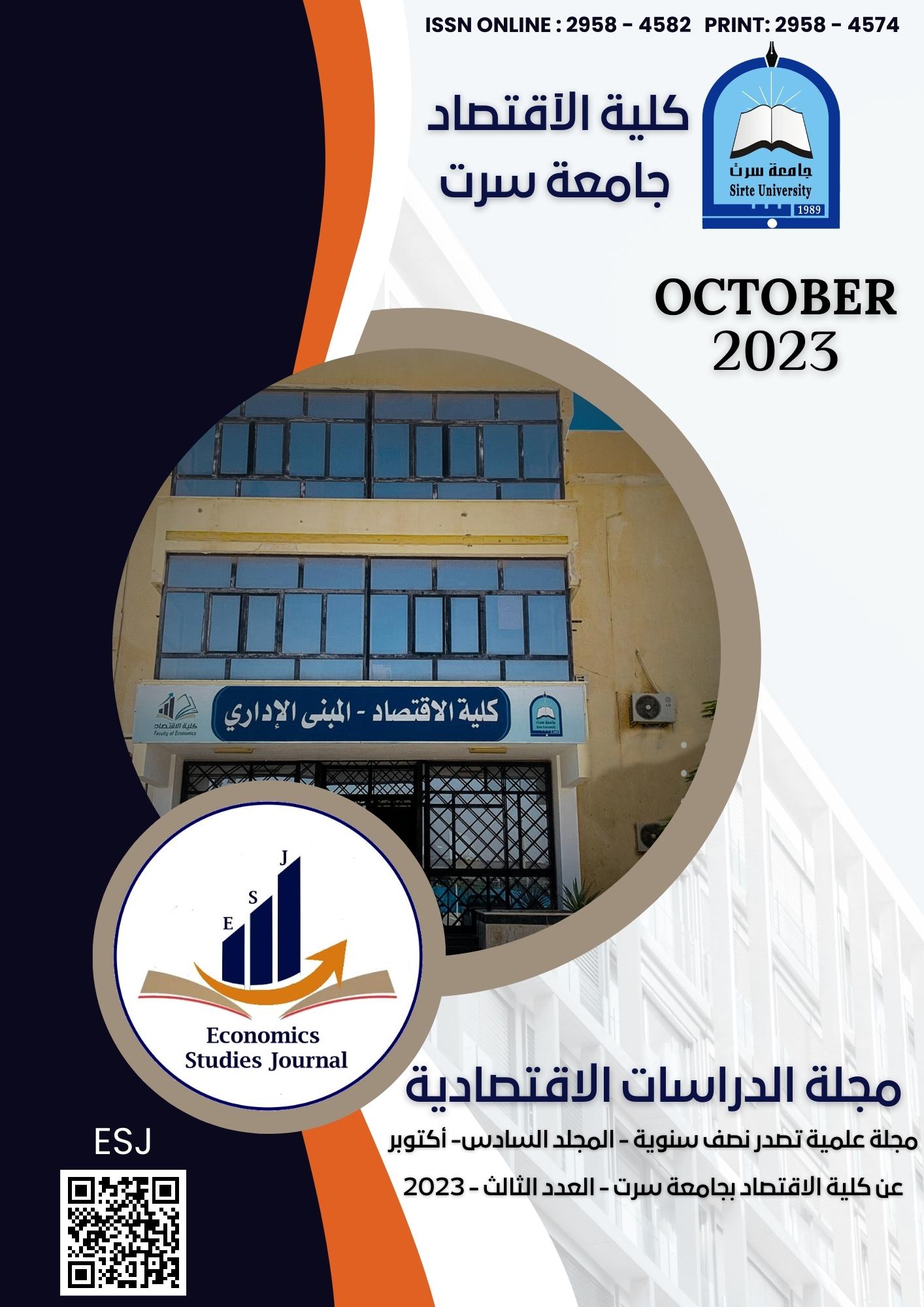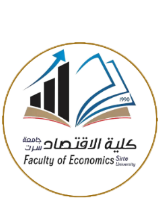The Impact of Bank Credit On Economic Activity In Libya Over The Period 1970-2022
Keywords:
Bank credit, Economic growth, Libya economy, Co-integrationAbstract
The current research analyses the impact of bank credit in economic growth in Libya over the period 1970 – 2022, co-integration approach was adopted in this research by using Engel-Granger method and causality Granger. The research resulted that there is no relationship in the long term between bank credit and economic growth. The causality Granger indicated that there is a positive bidirectional between the two variables in the short term.
References
قائمة المراجع
المراجع العربية:
مصرف ليبيا المركزي(2020). الكتيب الإحصائي للإحصاءات النقدية والمالية للفترة (1966-2017) ، https://cbl.gov.ly/#
مصرف ليبيا المركزي، التقرير السنوي، أعداد مختلفة.
مصرف ليبيا المركزي، النشرة الاقتصادية، أعداد مختلفة.
المراجع الإنجليزية:
Abille, A. B., & Mpuure, D. M. N. (2020). Effect of monetary policy on economic growth in Ghana. Applied Economics Journal, 27(2), 110-124.
Algaeed, A. H. (2021). Capital market development and economic growth: an ARDL approach for Saudi Arabia, 1985–2018. Journal of Business Economics and Management, 22(2), 388-409.
Al Mahish, M. (2016). The impact of financing on economic growth in Saudi Arabia. International Journal of Economics and Finance, 8(8), 1-10.
Al Zaidanin, J. S., & Al Zaidanin, O. J. (2021). The impact of credit risk management on the financial performance of United Arab Emirates commercial banks. International Journal of Research in Business and Social Science (2147-4478), 10(3), 303-319.
Al-Khaykanee, N. K. S., & Jassim, R. S. (2022). Measuring and Analyzing the Impact of Bank Cash Credit on the Growth of the Iraqi Economy for the Period (2004-2020). Baltic Journal of Law & Politics, 15(1), 1432-1446.
Benziane, R. (2019). The impact of monetary policy on algerian economic activity. Journal of Business and Economic Development, 4(1), 15-22.
Gujarati, D. N. (2004). Basic Econometrics, Forth Edition, McGraw-Hill. New York, pp 823-825.
Hasan, S. A., & Abdulhameed, M. M. (2022). Analysis of the Interrelationship between Monetary and Financial Stability and Its Reflection on Economic Growth in Iraq Using Match Theory. Specialusis Ugdymas, 1(43), 2145-2156.
Islam, M. S., Hossain, M. E., Chakrobortty, S., & Ema, N. S. (2021). Does the monetary policy have any short-run and long-run effect on economic growth? A developing and a developed country perspective. Asian Journal of Economics and Banking.
Kwashie, A. A., Baidoo, S. T., & Ayesu, E. K. (2022). Investigating the impact of credit risk on financial performance of commercial banks in Ghana. Cogent Economics & Finance, 10(1), 2109281.
Majeed, S., & Iftikhar, S. F. (2020). Modeling the Relationship between Banking Sector Credit and Economic Growth: A Sectoral Analysis for Pakistan. Journal of Economic Cooperation & Development, 41(1).
Mehta, A., & Bhavani, G. (2017). What determines banks’ profitability? Evidence from emerging markets-The case of the UAE banking sector. Accounting and finance research, 6(1), 77-88.
ZEGRIER, A., HABIB, K., & TIGANE, A. (2021). Measuring indicators of the development of the banking sector in the face of obstacles to financing economic activity in Algeria during the period (2000-2019). Journal of Al Mayadine Al Iktissadia, 357-371.




































